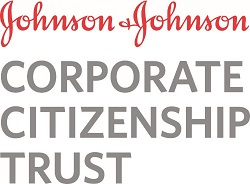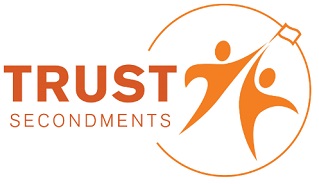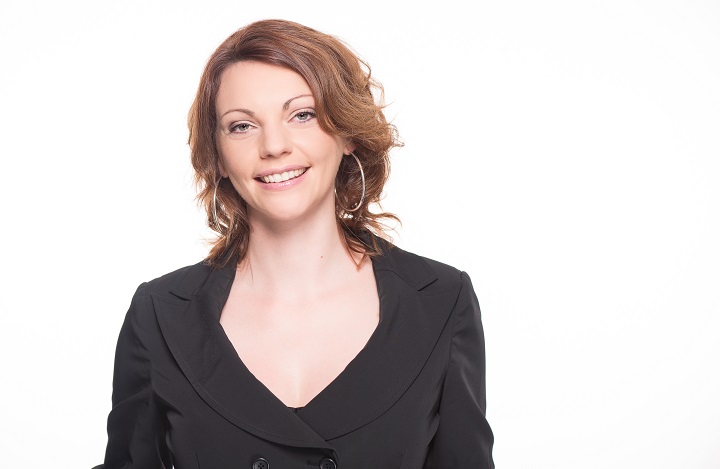
Hand in Hand with Johnson & Johnson
Klara Mayer of Janssen Austria, a pharmaceutical company of Johnson & Johnson (J&J), is joining Hand in Hand for six months. Follow her secondment here
As Country Disease Manager Oncology at Janssen Austria, a pharmaceutical company of Johnson & Johnson (J&J), Klara Mayer spends her time marketing Zytiga, a drug used in the fight against advanced prostate cancer.
Or at least she used to. From April to September 2016 Klara is pulling up stakes – from the comfort of Vienna to the chaos of London – to help Hand in Hand International in the fight against poverty.
Organised by the Johnson & Johnson Corporate Citizenship Trust (Trust), a partner of Hand in Hand International since 2011, the Trust Secondment Program nominates J&J talents to broaden their horizons by temporarily working for partners in the non-profit sector.
This blog follows Klara’s efforts to do just that. Check back monthly to find out what happens when an employee of one of the world’s biggest companies leaves it all behind, temporarily, to help a growing NGO find fundraising markets outside the UK.
- Final chapter
- Kicking off the finals
- The organization’s DNA
- My working life in one wor[l]d
- What’s new, what’s different?
- Time for a change
Chapter six: Busting myths on my secondment
Unbelievable, but true. The days of my secondment are numbered. Looking back at the past six months, a lot comes to mind: things I have learned, experiences I have gained, people I have met. Perhaps more than anything, I’ve seen a lot of myths debunked over the last 180 days. Here are some of them.
Myth #1: NGO’s work benevolently, but not professionally
That’s one of the main prejudices about non-profits. Not having any previous experience, I am not familiar with the way other NGOs work. But Hand in Hand International surprised me from the very beginning in terms of its strategic planning and effective execution.
Myth #2: Corporates have a completely different mentality
I wasn’t sure whether the J&J culture would mesh with the mentality of Hand in Hand. Any worries soon were gone: the team is very open-minded, committed and efficient. One major difference might be the amount of time we spend in meetings at J&J. But honestly, I didn’t miss that too much.
Myth #3: Six months is not enough time to make friends
Everyone who’s been abroad knows it takes time to get to know people in a foreign city. Nowadays, social media are helpful. However, I did it the old-fashioned way: I agreed to have a drink with colleagues from work. Analogue. Friendships established, which I hope will last.
Myth #4: Based in the office in London, I won’t see the work in the field
The goals of my secondment were clearly defined even before I started at Hand in Hand International. The tasks were interesting and ambitious but were related to the office in London. However, I was offered the opportunity to visit Hand in Hand Eastern Africa in Nairobi. It was a great experience that made me realize the great impact of Hand in Hands work on individual lives.
Myth #5: NGOs are not attractive to work for
Not being familiar with the third sector, I’d always thought NGOs were not attractive employers. It is rare, but sometimes I’m very happy to realize that I am wrong. Perhaps it is due to the small but very experienced team at Hand in Hand, comprised of different characters with completely different professional backgrounds – people from big corporates meet consultants, editors and former ambassadors, not to forget about the numerous employees – but clearly, there is no lack of topics to discuss!
Myth #6: Being part of J&J, my farewell at Hand in Hand International would be easy
Everything has to end at some point. And, actually, today is the day. Equipped with such an awesome and interesting experience I will continue my professional life at Janssen in Vienna. I’m very grateful for this secondment and I’m looking forward to starting again back home, though I say goodbye with mixed feelings. In leaving, I quote some very nice words from my line manager at Hand in Hand International: “In German, we don’t say good bye, we say ‘Auf Wiedersehen’, which means ‘I will see you again’.” Therefore: Auf Wiedersehen – it was a pleasure!
Chapter five: Kicking off the finals
My secondment resembles a football match. Although warmed up in advance, you need to make yourself comfortable with the new situation on the field, try to integrate, and contribute to the team right from the beginning. You have some time to act, but time passes very quickly and at some point you realize that you’re in the finals.
Unlike the usual performance of Austrian footballers, however, I have reached quite a few goals at this moment of truth.
Interim results and tactical analysis
A brief overview on the status of my secondment:
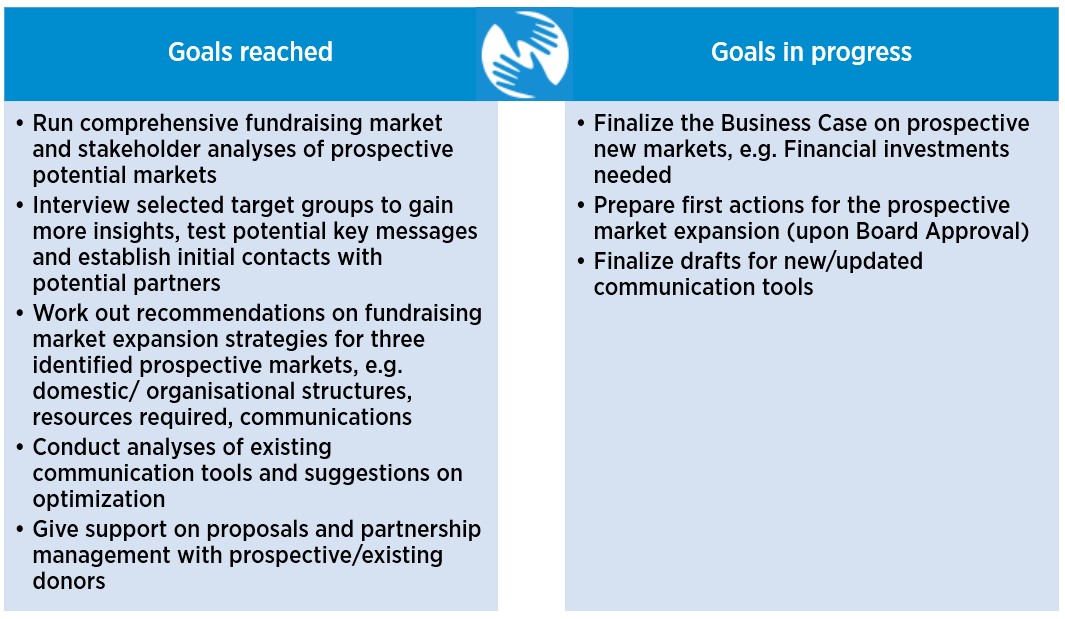
Looking back over the past five months, I’m quite proud of the results I’ve achieved. However, football is clearly a team sport, and so is business-life in an NGO and in any other kind of organisation. It’s been a very fair game so far – no yellow or red cards placed. Hand in Hand International is definitely a team worth playing for!
Final spurt
Usually a match gets very exciting towards the end. The winning spirit increases, once more forcing one to give it one’s all and make most of the time left. One of my main drivers, besides the finalization of my tasks, is the great possibility I was offered: a trip to Hand in Hand Eastern Africa in Nairobi, Kenya. I’m looking very forward to visiting the local team and seeing the work of Hand in Hand in the field.
Perhaps because I know the final whistle isn’t far off, I enjoy every day of this special experience at Hand in Hand International.
![]()
Chapter four: The organization’s DNA
We’re all familiar with the phrase, “a company is only as good as its people”. It’s also well-known that the performance of employees strongly depends on (though isn’t limited to) their tasks, competences, salaries, physical surroundings and technical equipment. Moreover, soft elements like a learning environment, social benefits, colleagues, culture, values and vision of the company strongly influence employees’ motivation and make them go the ‘extra mile’.
I’ve found a remarkably strong, positive attitude at both Janssen and Hand in Hand International. But where does it come from? How is it possible to create and spread a team spirit that motivates people to take responsibility and always strive to be better? I don’t have the answer, and I’m sure there isn’t just one. But I’m convinced that the core of a company, the vision and behaviour of its founder – along with the top management – one of the main triggers. In that vein, let’s have a closer look at where it all began, both at Janssen and at Hand in Hand International.
Conviction, passion and dedication lead the way
I don’t remember the precise point in time when I realized there were similarities in the characters of Dr. Paul Janssen, founder of Janssen Pharmaceuticals and Dr. Percy Barnevik, co-founder and honorary chair of Hand in Hand International. Perhaps it was while reading Percy’s book, ‘On Leadership’, and discovering the quote, “Visions need to be inspirational, credible and simple”. Having noticed the similarities, I reckon the two could have made friends.
Dr. Paul Janssen: The Patients are waiting
Dr. Paul Janssen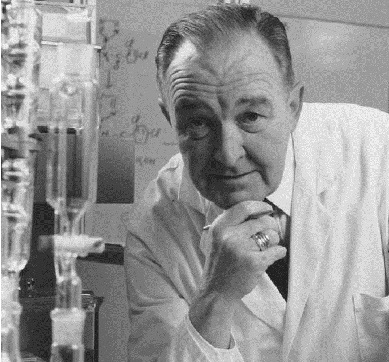 , medical doctor and researcher, founded Janssen Pharmaceuticals in 1953 in Belgium. I haven’t had the chance to meet him in person, but some of my colleagues have, and described him as very passionate and keen on understanding the way diseases occur and progress. He was constantly working to deepen this knowledge and combine it with his great medical background to find new therapies and medical solutions for patients. It is said that he was very inspirational to people, which must be true. Though Janssen Pharmaceuticals was incorporated to Johnson & Johnson in 1961, the company did not lose its core ambition. Quite the contrary: today eight substances on the World Health Organisation’s (WHO) List of Essential Medicines have been developed by Janssen. Even though Dr. Paul Janssen passed away 2013, his spirit remains present and drives the company’s success.
, medical doctor and researcher, founded Janssen Pharmaceuticals in 1953 in Belgium. I haven’t had the chance to meet him in person, but some of my colleagues have, and described him as very passionate and keen on understanding the way diseases occur and progress. He was constantly working to deepen this knowledge and combine it with his great medical background to find new therapies and medical solutions for patients. It is said that he was very inspirational to people, which must be true. Though Janssen Pharmaceuticals was incorporated to Johnson & Johnson in 1961, the company did not lose its core ambition. Quite the contrary: today eight substances on the World Health Organisation’s (WHO) List of Essential Medicines have been developed by Janssen. Even though Dr. Paul Janssen passed away 2013, his spirit remains present and drives the company’s success.
Dr. Percy Barnevik: Put people’s destinies into their own hands
Dr. Percy Barnevik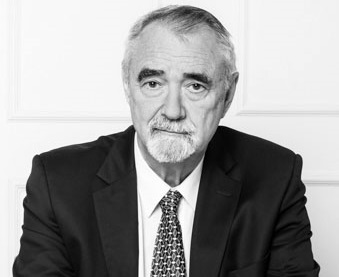 , one of the most successful company leaders in Europe, started his “last, biggest and most important project” by co-founding Hand in Hand International in 2003. His vast experience in establishing and running companies still sets the tone at Hand in Hand. Although he stepped down as Chair in 2014. In his function as Honorary Chair he is still present in the office and continues to inspire the team. In my personal view he has a great character, combining a persuasive vision with a big emphasis on efficient execution. He is a very charismatic person and a successful networker, and he genuinely cares about people. In short, he possesses the characteristics required to make a difference in this world.
, one of the most successful company leaders in Europe, started his “last, biggest and most important project” by co-founding Hand in Hand International in 2003. His vast experience in establishing and running companies still sets the tone at Hand in Hand. Although he stepped down as Chair in 2014. In his function as Honorary Chair he is still present in the office and continues to inspire the team. In my personal view he has a great character, combining a persuasive vision with a big emphasis on efficient execution. He is a very charismatic person and a successful networker, and he genuinely cares about people. In short, he possesses the characteristics required to make a difference in this world.
Courage and a hands-on-mentality lead to success
Both Dr. Paul Janssen and Dr. Percy Barnevik were/are very skilled, but skills are not enough. Ultimately, it was their strong ambition to act that helped them make a fundamental and lasting change for millions of people – a great gift, for themselves, their organisations and the world.
The Johnson & Johnson Corporate Citizenship Trust (Trust) Secondment Strategy program is an exciting and innovative program. It places selected J&J talent across the Europe, the Middle East and Africa (EMEA) region in long-term assignments (up to six months) with trusted NGO partners, helping to strengthen their organisational capacity and outreach through skill-based volunteering.
Read more about the program here.
Chapter three: My working life in one wor[l]d
If someone asked me to describe my time at Hand in Hand in just one word, I’d answer: ‘international’. It’s something that makes my secondment even more interesting, even if internationality isn’t universally popular these days.
I’m not only referring to London as one of Europe’s most colourful cities, however. What I’m really driving at is that Hand in Hand International is indeed what it claims: international. Imagine: 16 staff members work for Hand in Hand in London, spanning eight nationalities and 10 different languages. Great team, isn’t it?
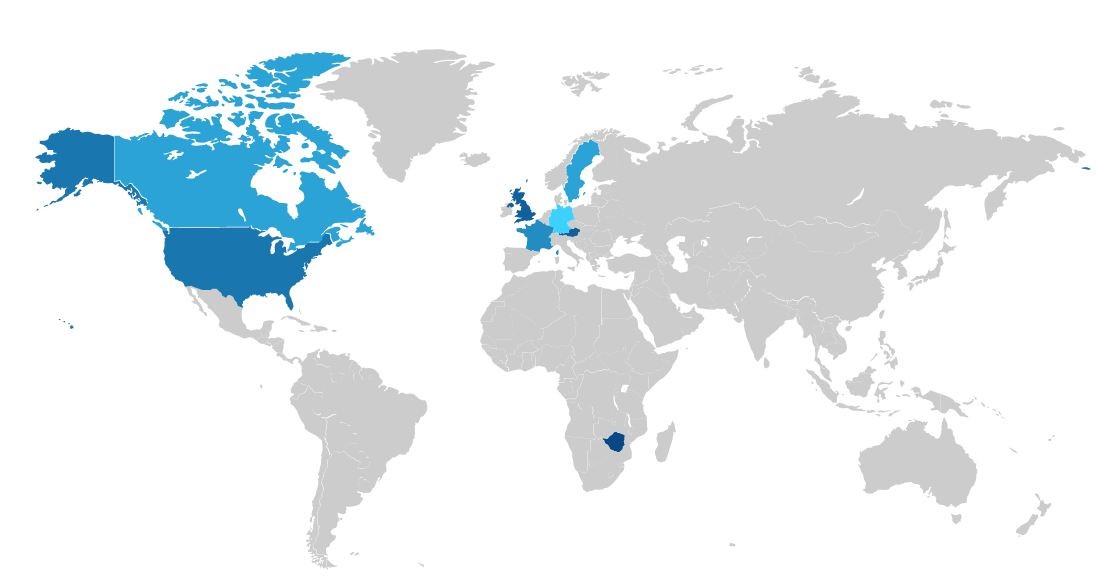
Nationalities of Hand in Hand International employees
Internationality at all points
Having spent more than four years with Johnson & Johnson and worked at another multinational company before that, an international and decentralized environment isn’t new to me. Nonetheless, it’s very interesting to see how Hand in Hand’s decentralized structure affects daily business, as updates and the exchange of information need to be dealt with across vast geographical distances and different time zones. Finally, one mustn’t forget about cultural aspects in communication and the working approaches of all people involved. Hand in Hand is currently running programs in five different countries in Asia and Africa, with supporting offices based in London and Stockholm.
Hand in Hand International’s responsibilities are many and varied – for example, fundraising and program design – but perhaps none are more important than knowledge management. As you might already know, Hand in Hand follows a four-step job creation approach, which is the same in every operating country – theoretically. In practice, an adaption to local requirements is necessary to run programs successfully.
Take the case of Afghanistan, where Hand in Hand needed to provide toolkits (which have all the required inputs for a given business) instead of the usual financial support through micro-loans, which violate Sharia law. This is just one example of the importance of sharing learnings and experiences among the entire Hand in Hand network to ensure a successful outcome for current and future programs – a task which isn’t always that easy when operating at such a high level of internationality and different requirements.
Click here for an overview of the countries where Hand in Hand International works, and the impact it has achieved so far.
The Johnson & Johnson Corporate Citizenship Trust (Trust) Secondment Strategy program is an exciting and innovative program. It places selected J&J talent across the Europe, the Middle East and Africa (EMEA) region in long-term assignments (up to six months) with trusted NGO partners, helping to strengthen their organisational capacity and outreach through skill-based volunteering.
Read more about the program here.
Chapter two: What’s new, what’s different?
It’s impossible to directly compare a healthcare company with a non-profit organization, seeing as they operate in completely different environments. That said, there are some interesting differences and similarities.
I haven’t had any experience with a non-profit organization yet. So starting my understanding from scratch, the biggest, most obvious difference between a healthcare company dedicated to research and science and an international development organization is the sector itself.
Johnson & Johnson
is a profit-oriented company with 265 operating companies in more than 60 countries. Generally speaking, that means setting targets ambitious enough to not only cover operating costs but to, for example, reinvest in the research and development of new molecules or highly sophisticated medical devices.
Hand in Hand International also sets financial targets, as this organization is run very professionally. But a non-profit doesn’t aim for a distinctive turnover. Instead, Hand in Hand aims to meet its goals mainly in order to establish and run local programs, and to cover the costs of support offices. Main objectives are measured in jobs created, businesses established and lives transformed.
![]()
Different influences: stakeholders and their requirements
Take a closer look at both sectors and you quickly realize that each deals with specific stakeholders, all of whom have different requirements and influences on the business.
In terms of Janssen, one of the world’s leading research-based pharmaceutical companies and part of the Johnson & Johnson Family of Companies, regulatory and public spending bodies have a very strong impact on success. So too do healthcare professionals, medical opinion leaders, the media and of course patients, along with patient advocacy groups and others. The aspiration is to provide the best therapy for the individual patient (efficacy vs. side-effects) and to ensure access to medication.
My research into possible new markets for Hand in Hand International also shows there are a lot of stakeholder groups that need to be considered – many more than I would have thought in the beginning, I have to admit. Government institutions, high-net-worth individuals (HNWI), corporate donors, foundations, other NGOs and those suffering from poverty themselves, just to mention a few, all need to be addressed. The overall goal is to provide help for self-help, appropriate to the situation in each country, considering factors such as natural resources, literacy, religion, infrastructure, political issues and security.
![]()
So what are the similarities?
Let’s stay with the topic of stakeholders. Governments influence both sectors immensely by committing to annual target rates of GDP for health and development spending. The conversation with pharmaceutical companies is mainly about the medical needs of the population (e.g. incidence rate, mortality rate), the applicable therapy indication (a distinctive stage of a disease where a therapy is officially approved for usage), the grade of therapy innovation (e.g. new mode of action, new application mode), and prices and reimbursement. Interaction with NGOs, meanwhile, is about cooperating in individual developing countries, requirements for receiving government funds and grant sizes. In both cases diplomacy, professionalism, good negotiating skills – and time – are necessary.
More holistically, though, Johnson & Johnson and Hand in Hand International share the same mission. Both want to help people who suffer. Both provide support. And both help people find their way (back) to a better and healthier life for them and their families.
The Johnson & Johnson Corporate Citizenship Trust (Trust) Secondment Strategy program is an exciting and innovative program. It places selected J&J talent across the Europe, the Middle East and Africa (EMEA) region in long-term assignments (up to six months) with trusted NGO partners, helping to strengthen their organisational capacity and outreach through skill-based volunteering.
Read more about the program here.
Chapter one: Time for a change
I arrived at Heathrow airport uncertain if my flat would be available, with lots still to be managed before heading into my new role for the next six months. With my four pieces of luggage – only the essentials, of course – I had touched down in one of the world’s most exciting cities: colourful, crowded, amazing, multifarious, busy. It was love at first sight. London just thrilled me, a great kick-off for a sustainable relationship.
Every sustainable partnership rests on common vision and mutual contribution. The partnership between the Trust and Hand in Hand proves once more J&J’s commitment to our values – values that Hand in Hand shares.
Discussions between the Trust and Hand in Hand began in 2010, followed by Trust-funded initiatives in Afghanistan (2011, 2014) and Kenya (2014). More recently, J&J helped Hand in Hand update its results measurement in Kenya. Partnering with the Trust on its Trust Secondment Program is another step towards strengthening the partnership and, moreover, an innovative way to share experiences and achieve common goals across sectors.
Why me
After more than three years in my job, I felt it was time for a change. Speaking to my boss about new opportunities, she drew my attention to the Trust Secondment Program – and specifically to Hand in Hand International. We both realised there was a good fit between the candidate’s requirements and my skills and experiences.
This secondment also met my aspirations for my further development. Having worked in product related marketing within the healthcare sector since finishing university, dealing with challenges in a completely new environment seemed very interesting.
There was a third factor, too. Like everyone in Vienna, I was also faced by the refugee crisis as people from Syria and elsewhere in the Middle East arrived en masse at the train stations every day. Hand in Hand International – which helps some of the world’s poorest people set up and run small businesses, removing the impetus leave their home country – seemed like a perfect fit. I was very happy to hear that I was nominated for the Trust Secondment Program. Nothing was going to get in my way to leave my comfort zone and try to give something back to society.
Why Johnson & Johnson
Johnson & Johnson is big. Really big. With 265 operating companies, spread across more than 60 countries around the world, employing approximately 126,500 people, we are:
- The world’s sixth-largest biologics company
- The world’s sixth-largest consumer health company;
- The world’s most comprehensive medical devices business;
- The world’s fifth-largest pharmaceuticals company.
In other words, we’re in a position to make a difference. This is recognised in our Credo, which underpins our commitment to Corporate Social Responsibility (CSR).
We are responsible to the communities in which we live and work and to the world community as well. We must be good citizens – support good works and charities… We must encourage civic improvements… protecting the environment and natural resources.
Excerpt from the J&J Credo
To ensure a clear focus and the alignment of our CSR programs and activities across all areas, the Trust was founded in 2007 to manage programs in Europe, the Middle East and Africa (EMEA). My secondment is especially relevant to the Trust’s emphasis on people-based initiatives, through which the Trust is building and strengthening underserved communities and driving forward sustainable and meaningful changes that will improve the health and well-being of generations to come. This enables J&J to give back to society in a unique way, allowing employees like me to have a life-changing experience, build my professional and personal development, and return to the business with fresh learnings and insights. And at the same time, Hand in Hand benefits from my knowledge and experience and I benefit from theirs.
Why Hand in Hand International
Hand in Hand International operates in a unique way: training is provided on a very local basis, considering crucial factors including religion, social attitudes, literacy, resources and security. They’ve already proven to be very experienced and successful in creating wealth. I was interested in finding out if they could also prevent the poor of today from becoming the refugees of tomorrow.
My first impression of Hand in Hand International? A small, highly engaged team working very professionally to fight poverty in Afghanistan and elsewhere. Working in a new environment is almost as exciting as my role itself, which is to increase Hand in Hand’s fundraising potential by helping expand into new countries.
I’m looking forward to gaining insights into the NGO market, along with getting to know my colleagues. Already, I’m convinced I can also bring valuable learnings back to J&J that, for example, strengthen our commitment to putting patients first.
About the Trust Secondment Program
The Trust Secondment Strategy program is an exciting and innovative program, and a key driver of the 2020 Trust Strategy. It places selected J&J talents across the Europe, the Middle East and Africa (EMEA) region in long-term assignments (up to six months) with trusted NGO partners; helping to strengthen their organisational capacity and outreach through skill-based volunteering. The Trust Secondment program was first piloted in 2014 with four secondment placements and two Flagship Partners: The Aga Khan Development Network and North Star Alliance. Following its successful outcome, the program was further up-scaled in 2015 to eight secondments with four NGO partners (including SOS Children’s Villages International and Dharma Life). As a result of the impact generated and following requests from our partners, 12 secondment placements with five NGOs were confirmed for 2016. Many of these secondments are continuing assignments first initiated during earlier placements, increasing the scope and potential long term impact of these projects, and demonstrating the shared value proposition of this unique program.
For more information, please click here.

